A Look Back at RawShooter, the Predecessor of Adobe Lightroom
![]()
Digital photo editing has come a long way in the past two decades, and two software programs that have impacted the field are RawShooter and Lightroom.
In this article, I will look at the impact of RawShooter on Lightroom, and how it helped shape the software we know today. It is not meant to be a review but a remembrance of RawShooter. Much more detailed reviews of it exist if you are interested.
The Vibrance Slider
One of the most significant contributions RawShooter made to Lightroom was the introduction of the Vibrance slider. The Vibrance slider was designed to selectively boost the saturation of less-saturated colors in an image without affecting skin tones or already-saturated colors. This was a popular tool among photographers who wanted to enhance the colors in their images while maintaining a natural look.
The Vibrance slider in Lightroom was based on the one in RawShooter, and it quickly became one of the most used tools in the software. Photographers found that they could achieve vibrant colors without the over-saturation that can occur with traditional saturation adjustments. The Vibrance slider also helped photographers to bring out details in images that might have been lost due to low saturation.
Color Correction Tools
RawShooter also influenced the development of Lightroom’s color correction tools. RawShooter approached color correction differently from other software programs at the time, and it focused on correcting colors based on the camera model and settings used. This approach allowed photographers to achieve more accurate and consistent colors across their images.
Lightroom adopted this approach to color correction and expanded upon it. Lightroom’s color correction tools allow photographers to correct colors based on the camera model and settings used, as well as lighting conditions and white balance. The software also includes a set of tools that allows photographers to adjust the hue, saturation, and luminance of individual colors in their images.
![]()
Workflow Capabilities
RawShooter was also known for its efficient workflow capabilities. These capabilities influenced the development of Lightroom. RawShooter user interface was designed to be intuitive and streamlined, allowing photographers to quickly and easily edit their images. The software also included batch processing capabilities allowing the same adjustments to apply to multiple images.
Lightroom expanded upon these workflow capabilities by introducing the concept of a catalog, which allowed photographers to organize and manage their images efficiently. The software also introduced presets, pre-defined adjustments that can be applied to images with a single click. The History panel in Lightroom’s Develop module allows photographers to step back through their editing process and undo previous adjustments.
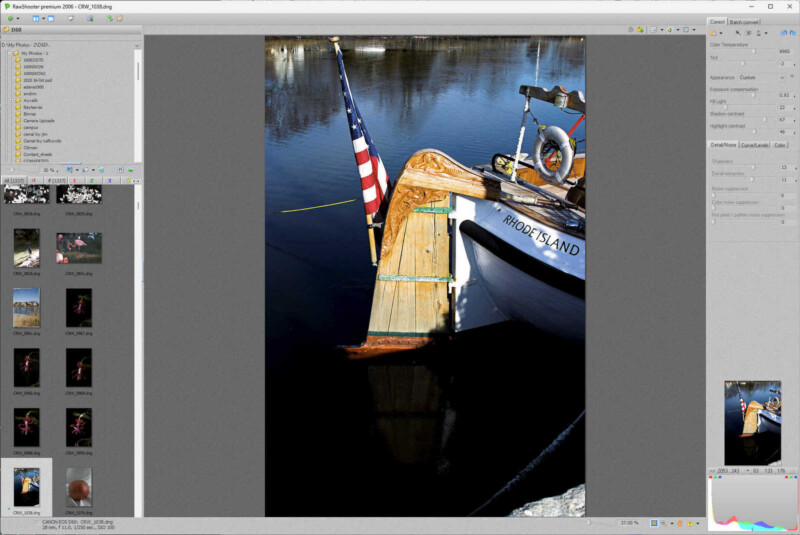
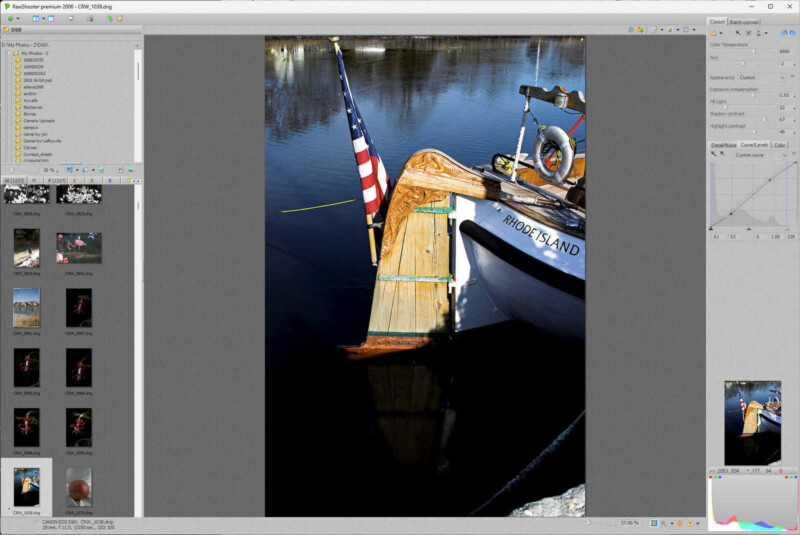
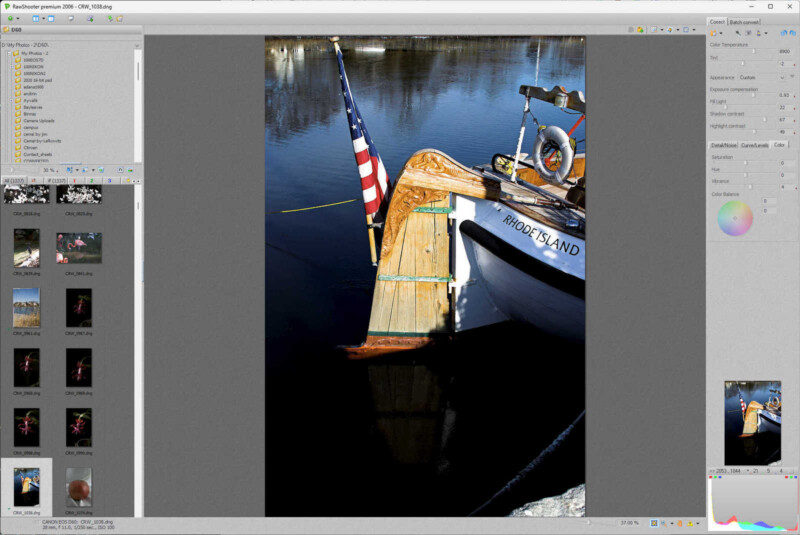
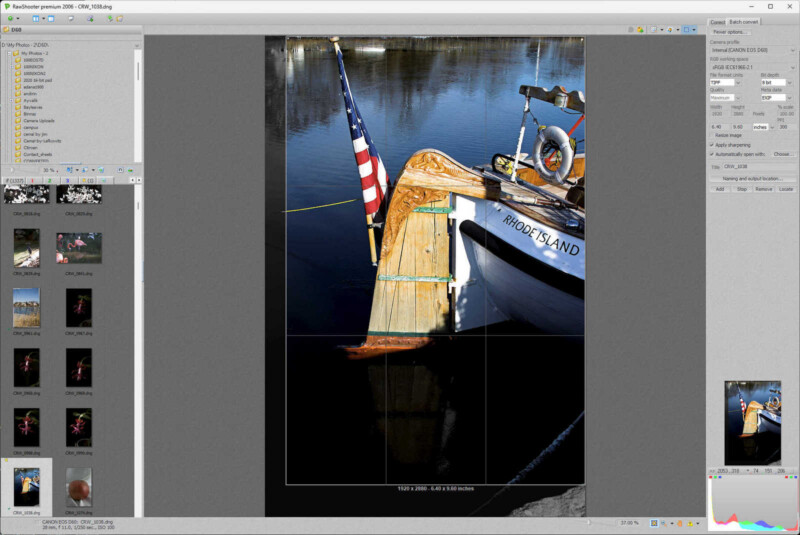
The Legacy of Rawshooter in Lightroom
While RawShooter was only available for a short time, its impact on Lightroom is still felt today. The Vibrance slider, color correction tools, and efficient workflow capabilities that were first introduced in RawShooter have become integral parts of Lightroom’s feature set.
Since its initial release, Lightroom has continued to evolve and improve, and it now includes many more features and tools that were not present in RawShooter. However, its roots in RawShooter are still visible in its user interface and feature set.
It Still Works – Somewhat
I still have a copy of RawShooter Premium and installed it on my computer. Although it cannot validate my license, it works for that session and the activation effort continues on the next launch. So, the screen captures above are very recent.
Having an old RAW engine, it cannot read past my Canon 5D, the original. But when I point to that folder, it quickly generates the thumbnails and the editing process is still smooth and straightforward. After I made the adjustments, I added them to the tab for batch processing, see the last screen capture above. Using the settings for file format, sizing, and destination folder, it quickly exported the files. Here are the sample photographs freshly processed in RawShooter Premium to help you remember the early days of digital photography.
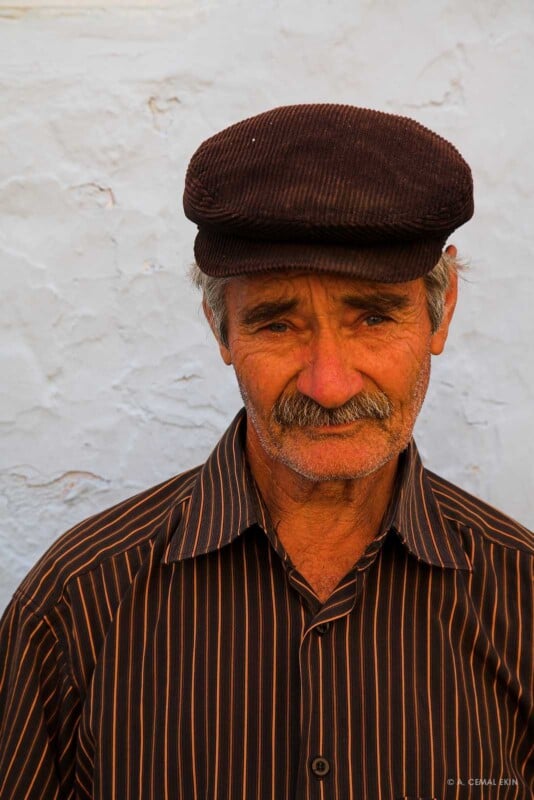


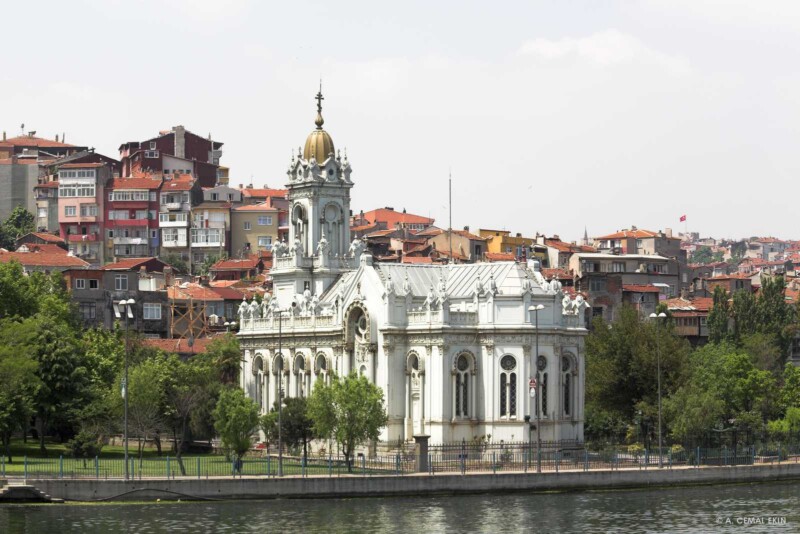

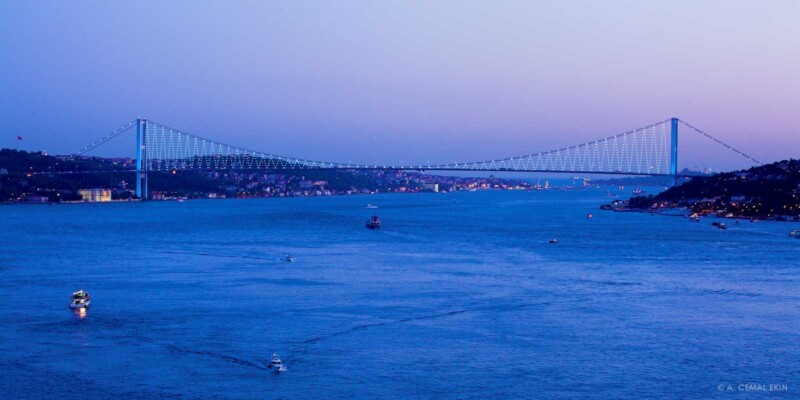
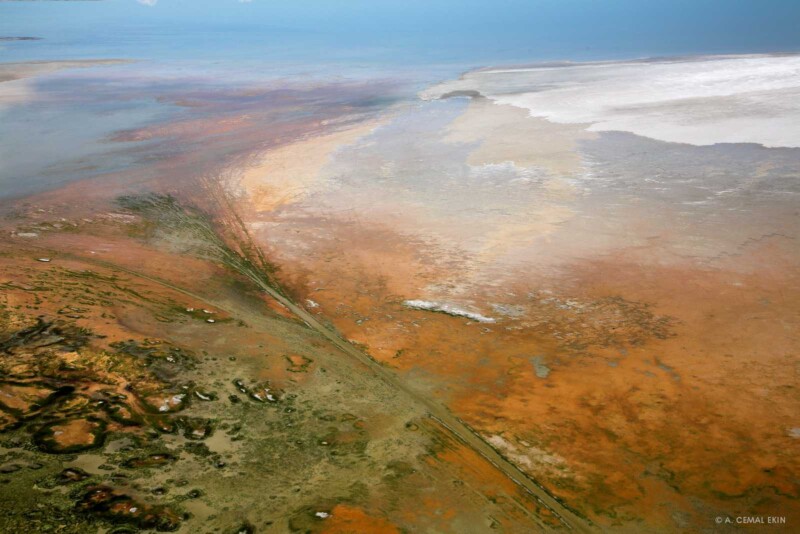

Conclusion
RawShooter may have been discontinued, but its impact on Lightroom cannot be overstated. The software’s emphasis on non-destructive editing, efficient workflow, and accurate color correction helped shape Lightroom into the powerful photo editing tool that it is today.
While some photographers still mourn the loss of RawShooter, its legacy lives on in Lightroom and other photo editing software programs. Despite its short existence, RawShooter has helped push the field of digital photo editing forward and made it easier and more accessible for photographers of all levels to create stunning images.
Competition
RawShooter’s impact on Lightroom was not only limited to the software’s feature set. The acquisition of RawShooter by Adobe also had a broader impact on the digital photo editing industry. Adobe’s acquisition of RawShooter was a strategic move to compete with other photo-editing software programs, such as Apple’s Aperture and Phase One’s Capture One.
The release of Lightroom was a direct response to the growing popularity of Aperture and Capture One, and the software’s success helped solidify Adobe’s position as a leader in the photo editing software market. The introduction of Lightroom also helped make non-destructive editing and efficient workflow a standard in the industry, and other photo-editing software has since adopted similar features and tools.
Interface
They also shared similarities in their user interface. Both programs have a similar layout and use a side-by-side panel system that allows photographers to compare the original image to their edited version. Additionally, both programs use a filmstrip at the bottom of the screen to display thumbnails, although RawShooter allowed the thumbnails to be displayed on the side panel if needed.
The user interface of Lightroom was designed to be intuitive and easy to use, and this is something that RawShooter also prioritized. Its user interface was praised for its simplicity and ease of use, and Lightroom followed a similar design philosophy.
Integration
Another area where RawShooter influenced Lightroom is in the software integration with other Adobe products. RawShooter integrated with Adobe Photoshop and allowed photographers to easily move their images between the two programs. Lightroom also integrates with Photoshop, as well as other Adobe products such as Adobe Bridge and Adobe Camera Raw.
The integration with other Adobe products is something that has helped make Lightroom a popular choice for photographers who are already using other Adobe software. The ability to easily move images between different programs makes the editing process more efficient and streamlined.
In conclusion, RawShooter’s impact on Lightroom is far-reaching and multi-faceted. The software’s influence on the Lightroom feature set, user interface, and integration with other Adobe products have all contributed to the software’s success and popularity. While RawShooter may no longer be available, its legacy in Lightroom and the broader digital photo editing industry is undeniable.
Thank you RawShooter and Pixmantec!
About the author: A. Cemal Ekin is a photographer based in Warwick, Rhode Island who has been shooting for roughly 60 years. The opinions expressed in this article are solely those of the author. Ekin retired as a professor of marketing emeritus from Providence College in 2012 after 36 years of service there. Visit his website here. This article was also published here.